The Serra de Tramuntana mountain range in Mallorca gave me a road trip I still can’t get out of my head. Right from the start, those twisting roads and dramatic cliffs had my heart thumping. Driving the Tramuntana coast, I ran into some of the most breathtaking ocean and valley views I’ve ever seen in Spain.
I tackled endless hairpin bends and tight curves, but honestly, each turn brought new surprises—stunning vistas, hidden villages, stone houses, and olive groves. As I made my way from Andratx to Sóller, every mile felt like a mini adventure, perfect for anyone who craves beauty and a bit of a thrill.
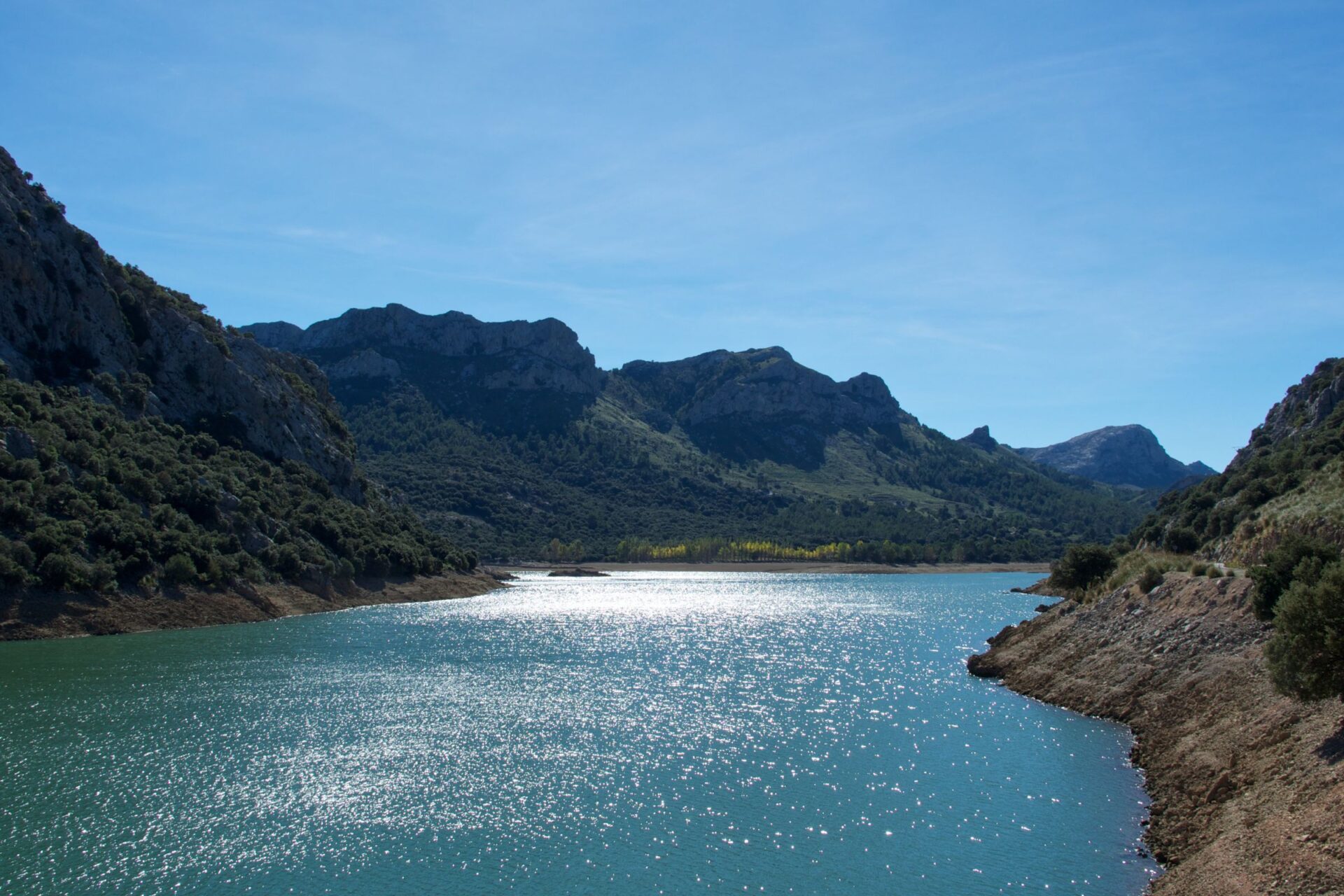
Thinking about driving through the Serra de Tramuntana? Get ready. This route mixes adventure with natural beauty in a way I didn’t expect. It’s not just a scenic escape—it’s a road trip that really earns its spot as one of Spain’s best.
Unraveling the Serra de Tramuntana: What Makes This Route So Special?
While driving the Serra de Tramuntana, I stumbled on a wild blend of nature and living culture. The range packs in historic landmarks, mountain peaks like Puig Major, a rugged coastline, and a story that’s deeply woven into Mallorca’s identity.
UNESCO World Heritage Status
When I found out the Serra de Tramuntana is a UNESCO World Heritage Site, my road trip suddenly felt a lot more special. UNESCO gave this region its status for its “cultural landscape.” It’s not just the physical beauty—it’s how people have shaped the land for centuries.
I spotted dry stone walls and terraces everywhere. Locals built these by hand to keep soil on those steep slopes, and they’re still working for olive and almond groves today. Walking through villages like Deià and Valldemossa, I felt the area’s history in every stone and terrace. Even on short hikes or guided tours, the mix of nature and culture hit me right away.
With UNESCO recognition, the Serra de Tramuntana stands out not just for its looks, but as a place where traditions live on and local life rolls alongside travelers like me.
The Geography: Majestic Peaks and Dramatic Coastline
The geography of the Serra de Tramuntana honestly blew my mind. This mountain range stretches almost 90 kilometers along Mallorca’s northwest, rising straight out of the Mediterranean. Peaks like Puig Major—the island’s highest at over 1,400 meters—dominate the skyline.

Image Source: Flickr
Driving those winding roads, especially the famous MA-10, I cruised through pine forests that smelled fresh in the early hours and climbed up to viewpoints where mountains and sea stretched out together. The coastline flips between sheer cliffs, secret coves, and old stone watchtowers. I stopped at lots of viewpoints marked along the way. They gave me some of the island’s most jaw-dropping vistas—great for photos or just soaking it all in.
Nature lovers get why the Serra de Tramuntana is also a UNESCO Biosphere Reserve. The area shelters rare birds and plants, so it’s paradise for photographers, hikers, or anyone who just wants to be outside.
Mallorca’s Mountain Culture
As I drove through the Serra de Tramuntana, I saw how mountain traditions really shape life here. Villages sit tucked into valleys and hillsides, built from local stone that blends right into the landscape. Markets in these towns sell olives, almonds, and cheeses—grown and made from the very terraces I passed on the road.
Hiking trails pop up everywhere, especially the famous Dry Stone Route (Ruta de Pedra en Sec). This old path links up remote villages and ancient farmhouses, giving a real taste of Mallorca’s past. Guided walking tours are a big thing, but I liked wandering some stretches solo.
People I met along the way seemed genuinely proud of their traditions, from stonework to festivals. Hospitality is huge here—even a quick coffee in a village café came with tips about the best viewpoints or beaches. For me, this mountain culture is the real heart of the Tramuntana experience.
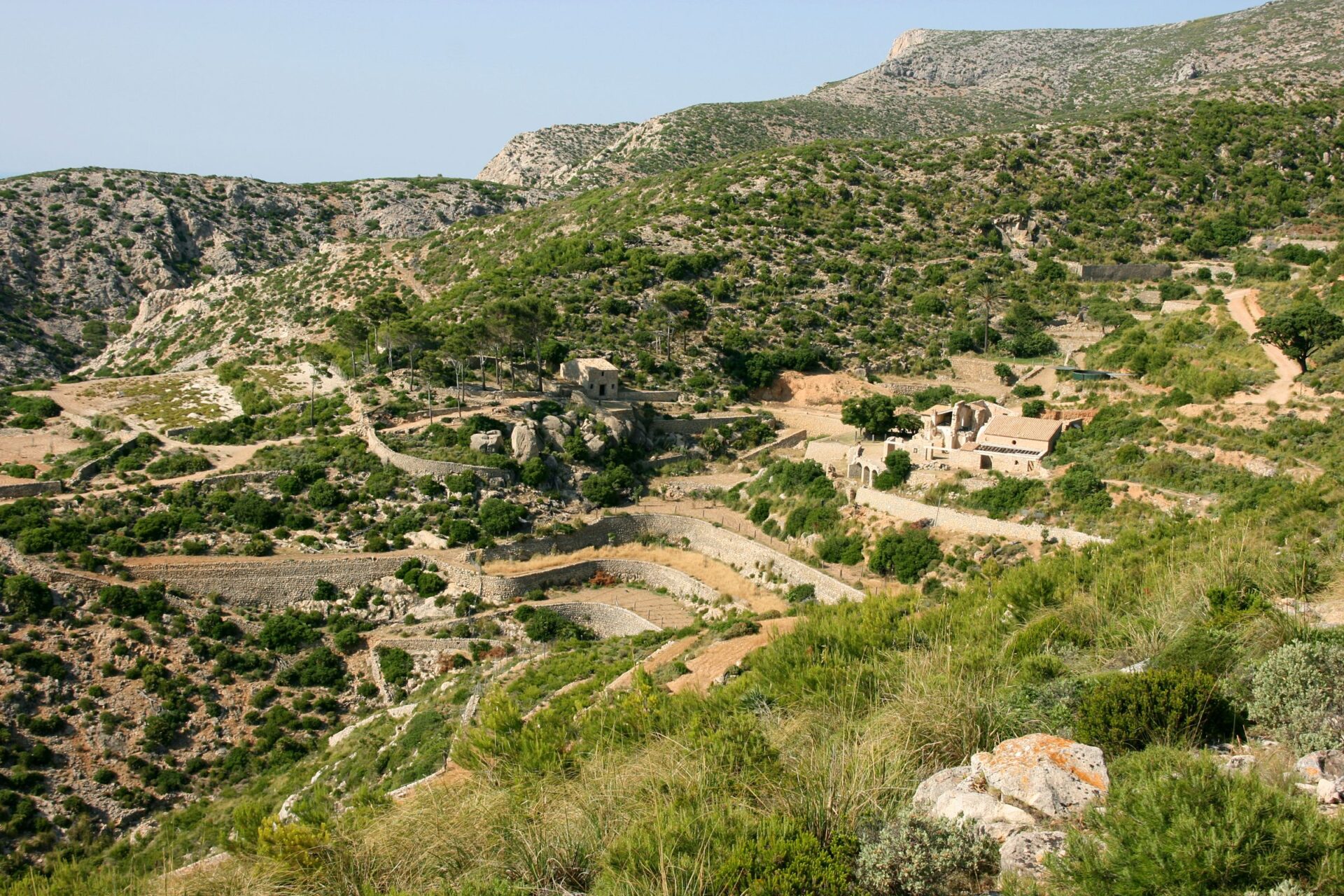
Planning Your Epic Serra de Tramuntana Road Trip
Driving the Serra de Tramuntana means winding through dramatic mountains, stone villages, and those wild coastal roads. You’ll need a bit of patience and planning—those hairpin bends aren’t for the faint of heart, and picking your start point matters.
When to Go: Weather and Climate Tips
I’ve learned that the best times to drive are spring and autumn—April to June or September to early November. Days stay sunny, with highs from 18 to 27°C (64–81°F), and the roads are quieter than in July or August. Summer brings more heat, more traffic, and a lot more tourists, with highs above 30°C (86°F).
I skip the peak of winter, December to February, since the weather can get rainy and some mountain routes close. Early mornings and late afternoons offer softer light and cooler temps. I always pack layers, sunglasses, and check the local weather before heading out.
Getting There: Palma, Palma Airport, and Transport Essentials
Most travelers, myself included, kick things off in Palma, Mallorca’s capital. Palma Airport (PMI) is modern, busy, and easy to navigate, with car rentals right at the terminal. Usually, I pick up my keys and get on the road in under 30 minutes.
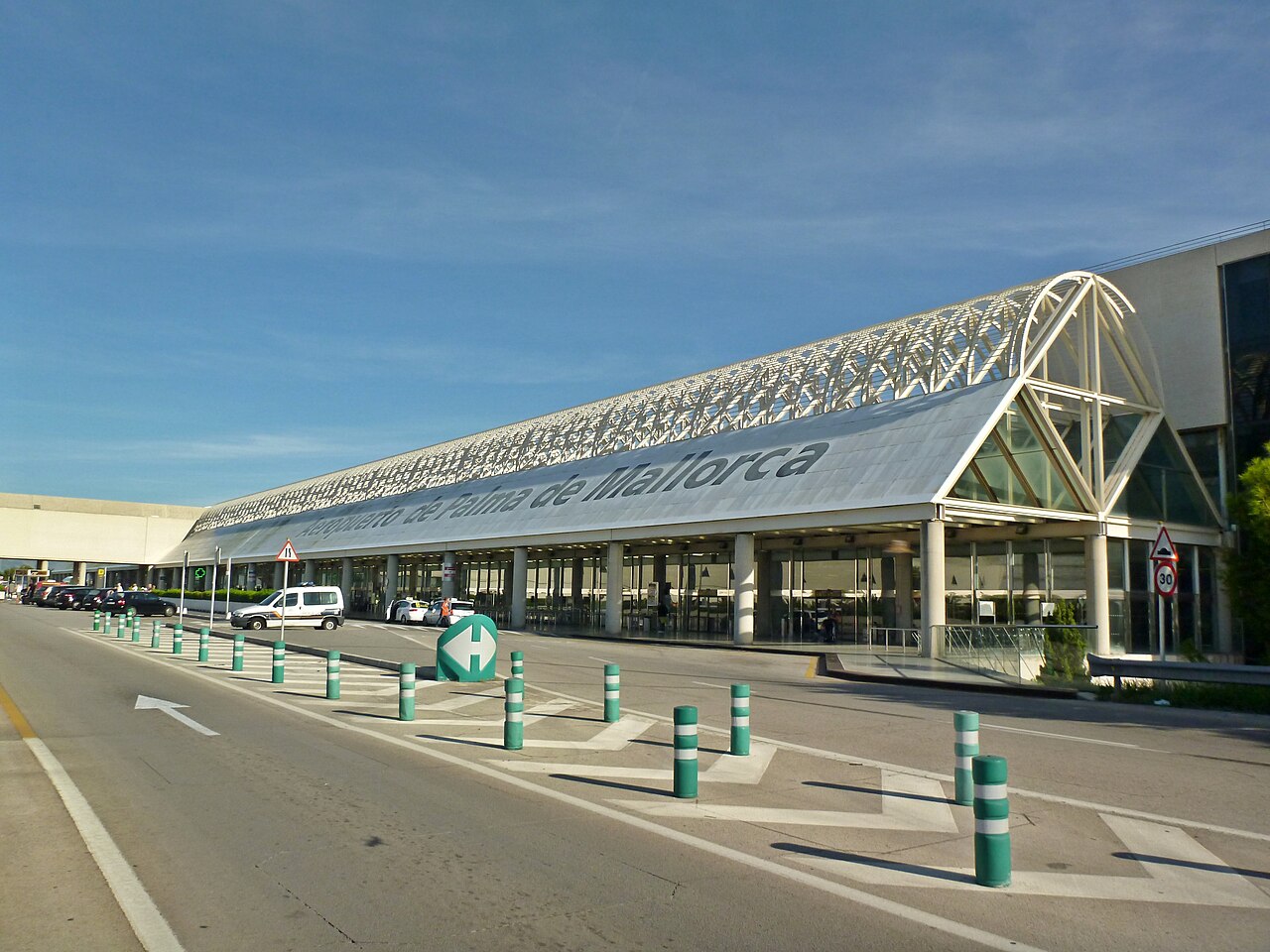
Image Source: Wikimedia Commons
From Palma, the main Ma-10 road leads straight into the heart of the Tramuntana. Public buses do reach some villages, but honestly, having your own car gives you the freedom these drives deserve. I always pre-book rentals in busy seasons to avoid missing out. Cash and a GPS or offline map? Always in my bag.
Choosing the Right Vehicle for the Mountain Drive
For these winding mountain roads, I always grab a compact or mid-sized car. Big SUVs or vans just make the tight bends and narrow village streets more stressful. Manuals are the norm in Spain—if you need an automatic, definitely book ahead.
I check brakes, tires, and the spare before setting off. Most rentals come with local roadside assistance, but I double-check. Water, snacks, and a healthy dose of patience help too—pulling over for photos means letting faster locals zip by.
Driving the Coastal Roads: Hairpin Bends, Scenic Stops, and Must-See Sights
Every bend along the Serra de Tramuntana brought a mix of excitement and peace. The road serves up dramatic mountain views, secret beaches, and some of Spain’s best driving experiences.
Andratx to Sóller: Jaw-Dropping Coastal Views
The stretch from Andratx to Sóller is just wild—curve after curve, cliffs dropping to turquoise water, Tramuntana peaks towering above. The scenery changed so much, I just had to stop for photos and to stare down at the quiet coves. The route passes through villages like Estellencs and Deià, where I grabbed snacks and wandered the narrow stone lanes.

Here’s a quick list of scenic stops between Andratx and Sóller:
| Scenic Stop | What to See |
|---|---|
| Estellencs | Sea views, village center |
| Banyalbufar | Terraced hills, small beaches |
| Deià | Artists’ town, cafés |
| Son Marroig | Famous viewpoint, olive groves |
| Mirador de Sa Foradada | Coastal rock arch views |
Pullouts and viewpoints pop up a lot, but parking can get tight. Early mornings gave me quiet roads and that golden light for photos—can’t recommend that enough.
Sa Calobra and the Iconic Hairpin Bends
Sa Calobra’s road is legendary in Spain. The 13-kilometer descent throws more than 50 tight hairpin bends at you. Those sharp turns—and the famous “Nus de Sa Corbata” (Tie Knot)—forced me to slow down, grip the wheel, and just hang on.
At the bottom, I found a hidden pebble beach and the Torrent de Pareis gorge. The view at the end felt like a reward after that wild drive. Heads up: If you get carsick, go easy and maybe skip the big lunch before this part. I found the road busiest after lunch, so I started early and got the cove mostly to myself.

Coll de Sóller and the Legendary Ascent
Coll de Sóller is a must for anyone who loves driving or cycling. The road between Palma and Sóller twists through more than 20 sharp bends on each side, winding past olive groves and pine forests. Since trucks aren’t allowed, it’s usually pretty quiet except for cyclists and the occasional classic car.
At the top, I stopped for fresh orange juice at a roadside café—Sóller’s citrus is famous. The views over the valley stretch for miles. On the way down, it’s tempting to stare at the scenery, but I had to remind myself to keep my eyes on the road.
Driving Safely: Tips, Traffic, and Patience
Patience is everything on these mountain roads. I often shared narrow lanes with cyclists and slow drivers, especially near spots like Sa Calobra and Coll de Sóller.

I always used pullouts to let locals pass and never rushed. Here are my supportive driving tips for this region:
- Go slow on bends: Hairpins are sharper than you think.
- Start early or late: Skip the midday tour bus crowds.
- Check your brakes: Steep descents are tough—use low gear.
- Bring water and snacks: Stops aren’t always close.
- Watch for cyclists: They’re everywhere, especially on weekends.
A little courtesy goes a long way. Locals are used to tourists, but being polite and patient made my drive way more enjoyable.
Charming Towns & Refined Stops Along the Route
Every turn through the Serra de Tramuntana reveals a new village—some quiet mountain escapes, others lively coastal towns. Beautiful old buildings, tasty local food, and amazing scenery made me want to stop and linger at each one.
Valldemossa: Artistic Flair and Historic Streets
Valldemossa’s narrow, cobblestone lanes caught my eye first. Green-shuttered houses and blooming flowers give the town a peaceful but lively vibe. I visited the Royal Carthusian Monastery, where Chopin once stayed—its quiet courtyards and small museum made the town’s deep history feel real.

Art galleries and artisan shops line almost every street. I found ceramics and paintings that really show off the local style. Cafés serve coca de patata, a soft sweet bun that’s perfect with coffee. The mountain air and shady squares made it easy to sit back and just enjoy the slow pace.
Highlights in Valldemossa:
- Royal Carthusian Monastery
- Cobblestone streets and stone houses
- Local bakeries and peaceful gardens
Deià: Bohemian Vibes and Coastal Views
Deià sits perched on the slopes, with the sea sparkling below. Walking through the village, I got why artists and writers have flocked here for years. Stone cottages are tucked among orange and lemon trees. When the late afternoon sun hits, everything glows gold.
There’s a creative, laid-back energy—from quirky art studios to cozy bookshops. I followed a short trail down to Cala Deià, a rocky cove perfect for swimming or just watching fishing boats drift by. Local restaurants serve fresh seafood, and sunsets here are framed by cliffs and olive groves.
Reasons to Explore Deià:
- Art galleries and music events
- Walks through olive groves
- Cala Deià beach and hidden coves
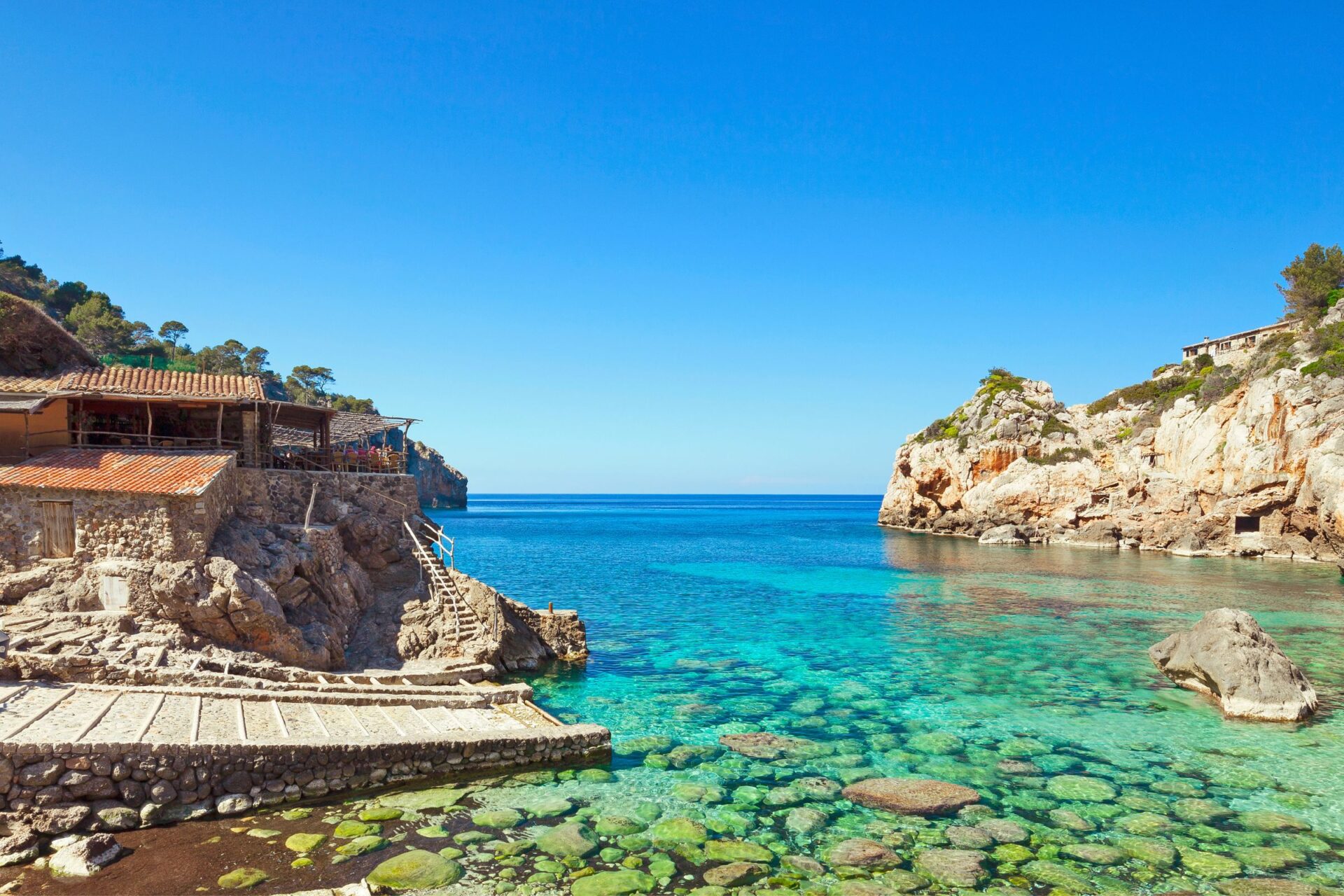
Sóller: Citrus Groves and Mountain Backdrop
Sóller sits in a lush valley, surrounded by high peaks.
The scent of oranges hits me as soon as I arrive, since citrus orchards fill the countryside.
The town square buzzes with life, lined with cafés and anchored by the beautiful church, Sant Bartomeu.
I hopped on the old wooden tram from Sóller to Port de Sóller and loved every minute.
The tram rattles past orange groves and opens up great views of the bay.
I always try to make time for the town’s Modernist architecture, local ice cream, and the Saturday market.
Sóller mixes tradition with an easy-going charm that makes it hard not to just wander all afternoon.
What I Love in Sóller:
- Historic Sóller tram
- Weekly market in the main square
- Mediterranean port and scenic mountain hikes
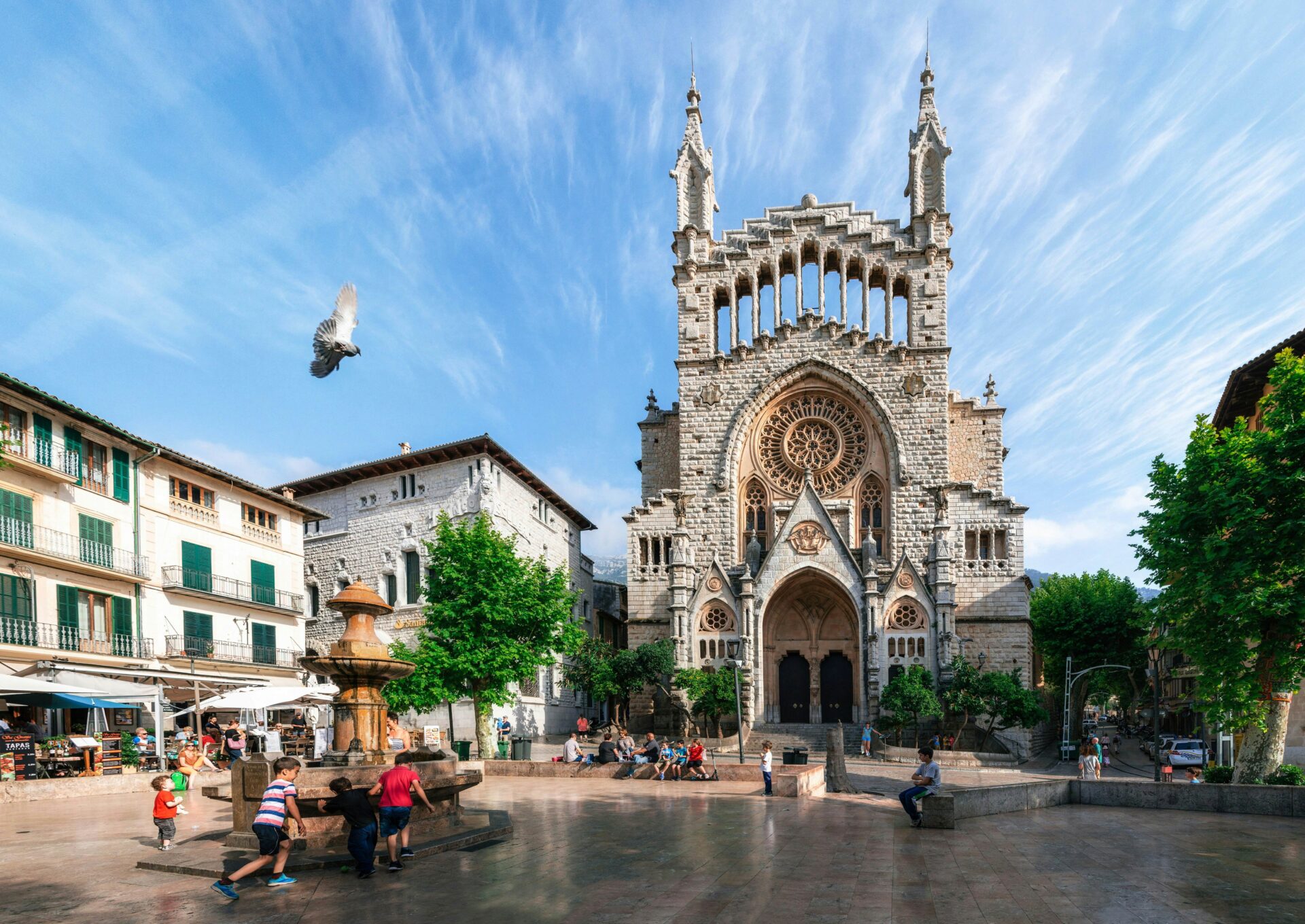
Image Source: Lonely Planet
Beyond the Wheel: Experiences to Elevate Your Serra de Tramuntana Adventure
Besides driving, I keep finding new ways to dive into the magic of the Serra de Tramuntana.
Every village and trail brings something different—adventure, local flavors, or a bit of late-night fun.
Cycling and Mountain Biking Paradise
When I take a break from driving, I notice cyclists everywhere—locals and travelers grinding up those scenic climbs.
The winding roads and steep hairpin bends make the Tramuntana a favorite spot for road biking.
Cycling tours often start in towns like Sóller and Pollença, and you can rent bikes with zero hassle.
If you want something rougher, mountain biking trails crisscross old olive groves and weave through pine forests.
Some routes offer sweeping sea views and pass by ancient stone terraces.
The landscape changes fast, so every ride feels fresh.
I found marked trails for every skill level.
Cyclists love to stop at small cafés along the way.
A quick café con leche on a sunny terrace became my daily treat, especially after a tough climb.
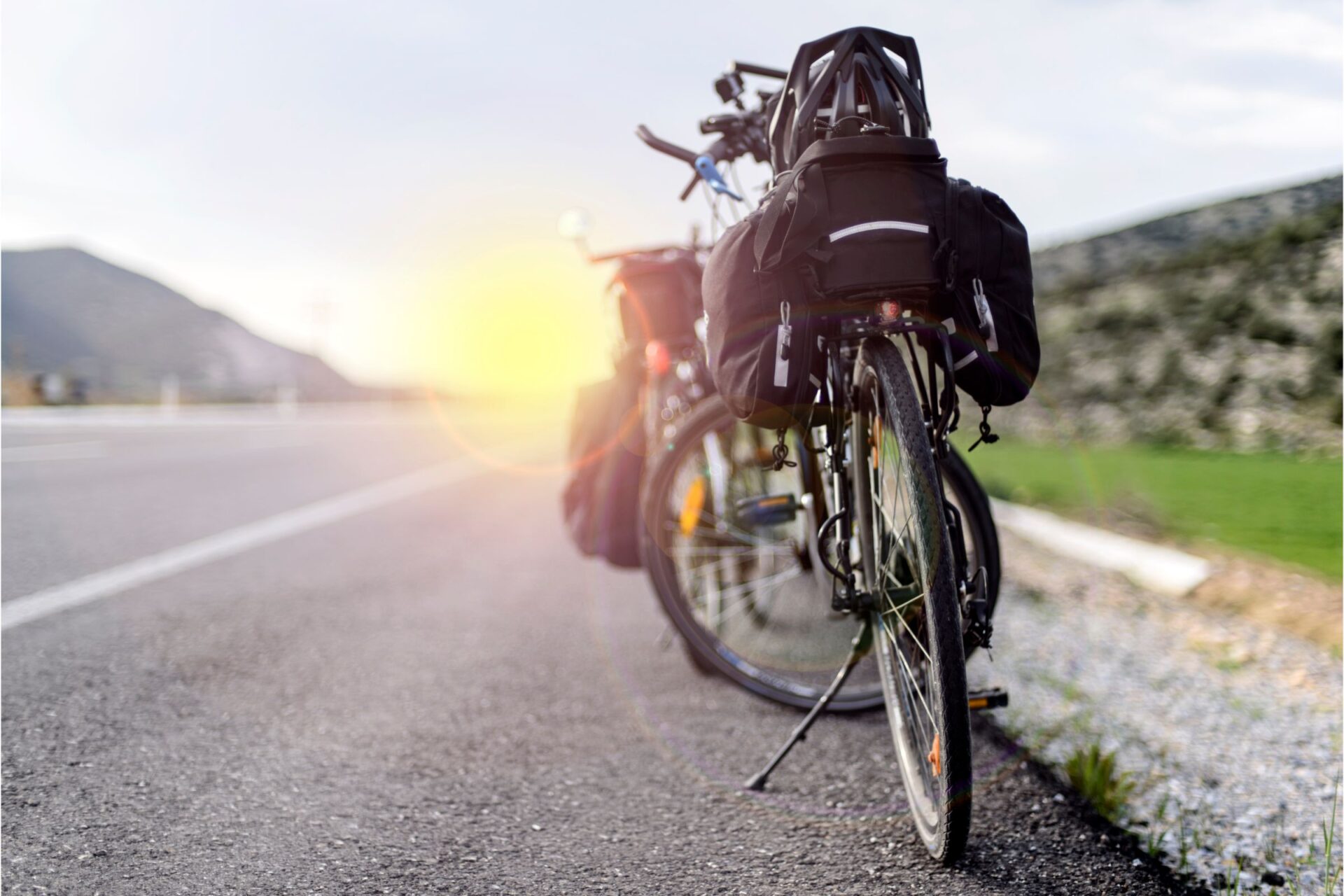
Guided Walking and Hiking Routes
Hiking in the Tramuntana shows off a whole new side of Mallorca.
Guided walks usually start in coastal towns like Deià or Valldemossa and wind up into the hills.
I wander among wildflowers and rocky peaks, and going with a guide lets me learn about the region’s plants, birds, and history as I hike.
The legendary GR221 “Dry Stone Route” cuts through much of the range, connecting quiet villages and scenic outlooks.
On guided walks, I never worry about getting lost or missing hidden detours.
Most tours run half-day or full-day and you can book them through local operators or hotels.
If I want something easier, paved village paths and old donkey trails give me amazing views with just a short walk.
Good walking shoes, water, and a camera always make the trek better.
Local Cuisine, Cocktails, and Nightlife
Food draws me back to the Tramuntana again and again.
In mountain towns like Fornalutx or Banyalbufar, I dig into hearty Mallorcan dishes—pa amb oli (bread, olive oil, tomato), tumbet (vegetable bake), and local lamb.
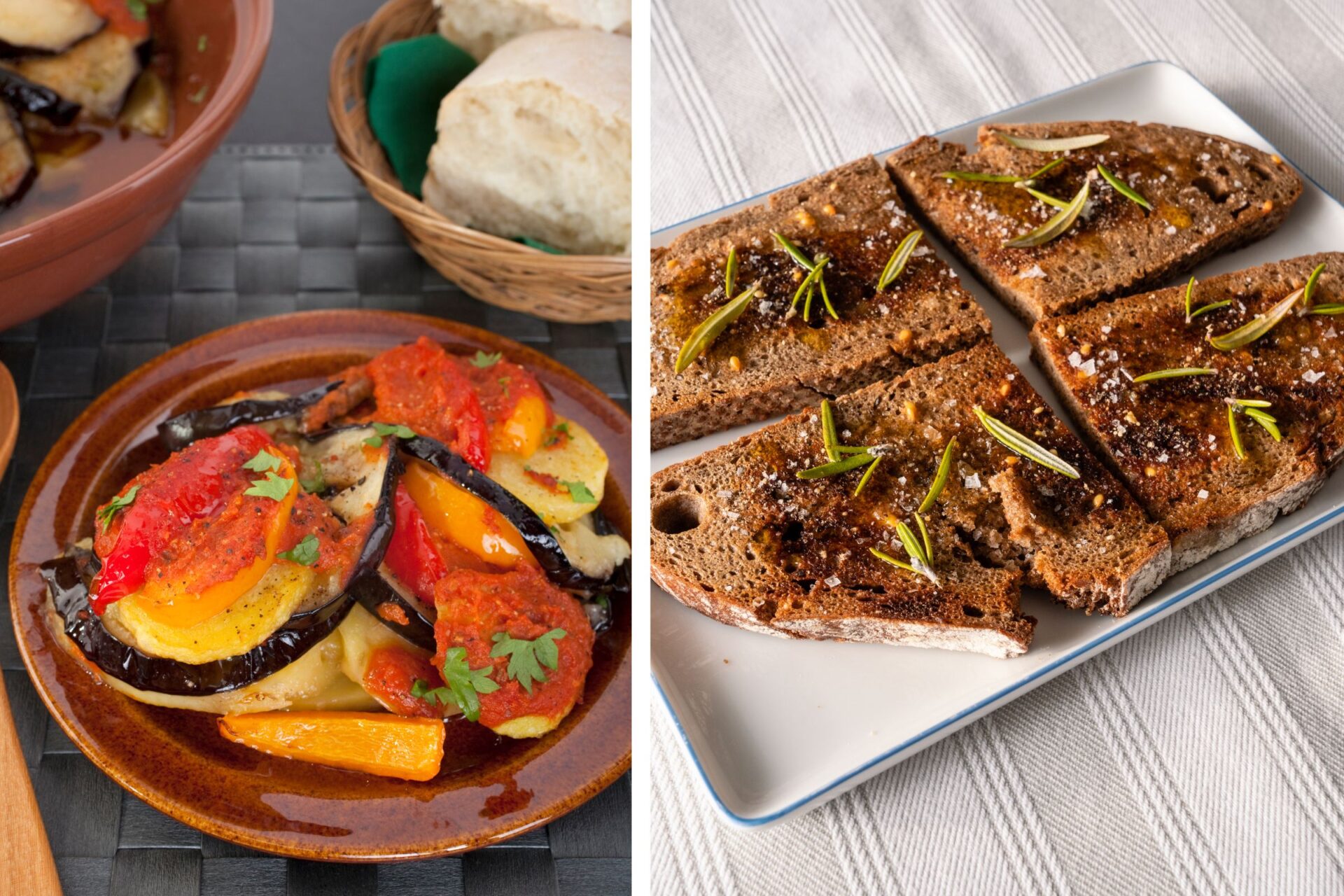
Many restaurants set up outdoor tables with views of the mountains or the sea.
Evenings in these villages are special.
The plazas come alive, and I’ll catch live music at a local bar or sip a cocktail by the sea in Port de Sóller.
Popular drinks include a sweet hierbas liqueur or a crisp local wine.
Nightlife here feels relaxed—think tapas, laughter, and chatting under the stars.
It’s not about loud nightclubs, but about those simple evenings that just feel right after a long hike or drive.
Extending Your Majorca Adventure: Nearby Islands and Beach Escapes
After twisting along the cliffs and hairpin turns of the Serra de Tramuntana, I like to balance things out by exploring the quiet beach escapes and nearby islands just off Majorca’s coast.
Sandy beaches and vibrant local culture are just a short drive or ferry away.
Exploring Formentor Beach and Hidden Bays
Formentor Beach grabs your attention right away with its clear turquoise water and the shade of pine trees.
I park under the pines and wander along the soft sand, watching sailboats drift just offshore.

The scenery makes the twisty drive out to Cap de Formentor totally worth it.
If you’re like me and want quieter spots, check out the small hidden coves nearby.
Many are tucked behind rocks and only reachable on foot or by boat.
Cala Murta and Cala Figuera are popular options.
The water is crystal clear and you’ll usually find fewer people than at the main beach.
Perfect for a swim or a peaceful picnic.
| Hidden Bays | Features | How to Get There |
|---|---|---|
| Cala Murta | Secluded, calm water | Hike or boat |
| Cala Figuera | Rocky, great for snorkel | Short trail from parking |
Island-Hopping: Menorca, Ibiza, and Formentera
Sometimes, after a long day hiking or driving, I just want a change of pace. Island-hopping from Majorca scratches that itch—new beaches, new history, and yeah, even different nightlife.
I grabbed a ferry from Palma’s terminal. Booking a trip to Menorca, Ibiza, or Formentera turned out to be pretty straightforward.
Menorca feels quieter than Majorca. Its unspoiled beaches have shallow waters that are perfect for a lazy swim.
I tried the local cheese, which surprised me with how good it was, and wandered the historic streets of Ciutadella.
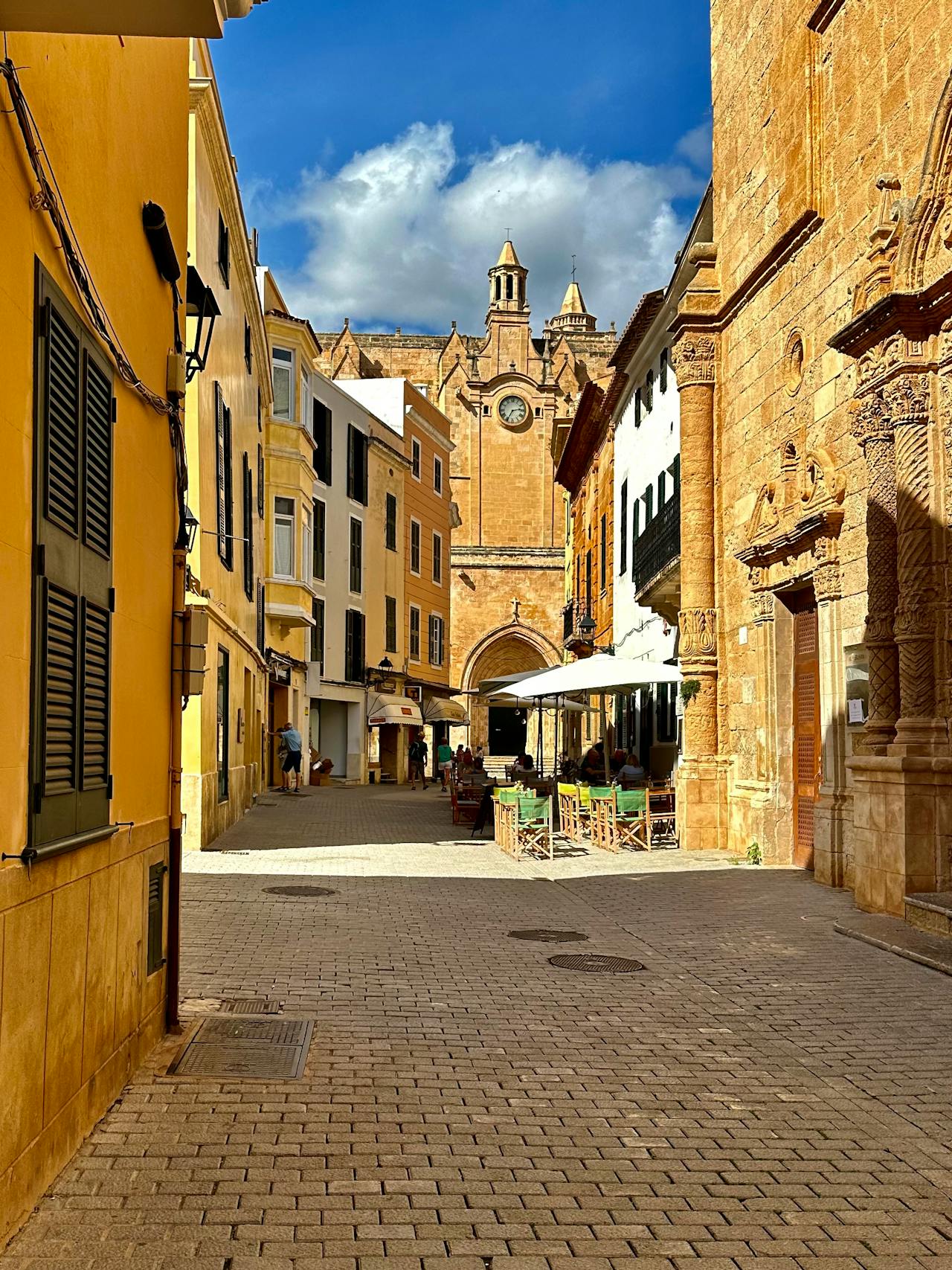
Ibiza sits just a short ferry ride away. It’s not all wild parties, despite the reputation.
I loved strolling through the old town, Dalt Vila, in the morning. After a late night, those hidden coves around the island made for some seriously peaceful downtime.
Formentera is tiny compared to the others. Still, its beaches—especially Playa de Ses Illetes—have some of the clearest water I’ve ever seen.
I rented a bike to hop between beaches. The slow, relaxed vibe here really stood out after the buzzier islands.
Getting to Formentera is simple—a quick ferry from Ibiza, so you can easily see both in one go.

